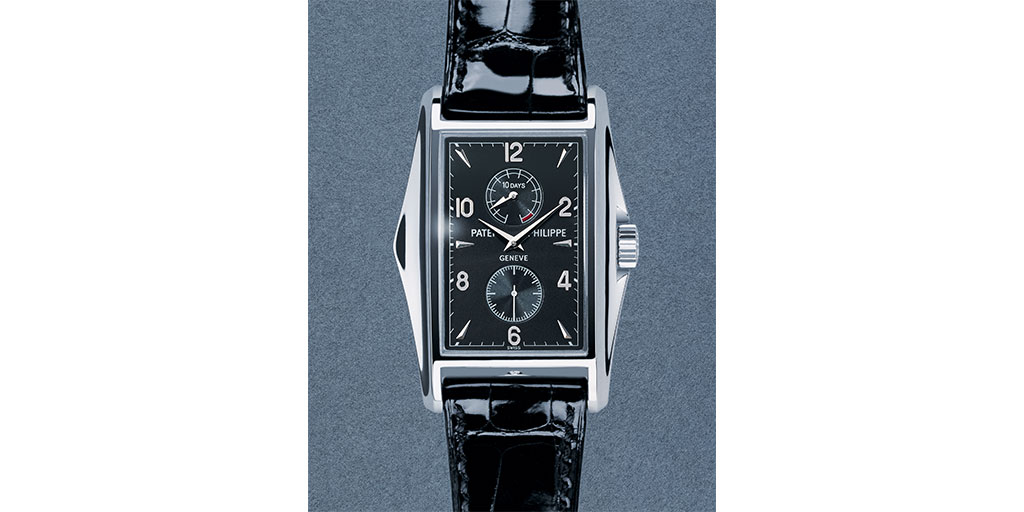As the year 2000 approached, so did speculation among the watchmaking community as to how Patek Philippe would celebrate such a momentous period in history. How could it surpass the brilliance of the Calibre 89 in just 11 relatively short years in watchmaking development terms? The company did not disappoint and unveiled one of its most spectacular creations: the Star Caliber 2000 with 21 complications. In addition, the company launched the ref. 5100 with a revolutionary rectangular movement capable of storing for the first time, ten days’ worth of winding power. Even the Patek Philippe Geneva Salon had its own limited edition, the ref. 5032 Millennium.
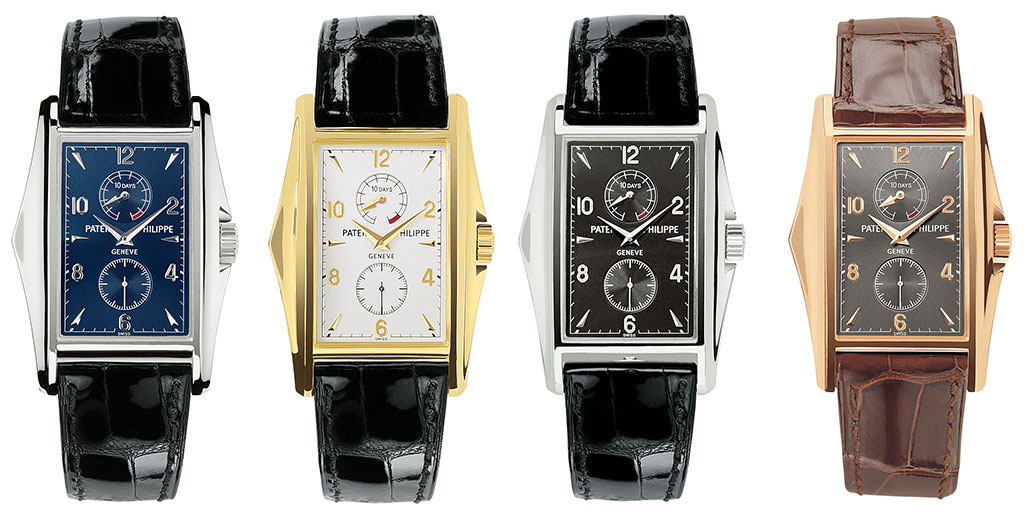
The Star Caliber 2000 once again demonstrated that Patek Philippe rules supreme in the world of mechanical innovations. The timepiece was conceived in January 1993 and completed in October 2000. According to Philippe Stern, “The objective of the project was to link the past with the future and tradition with innovation and not to integrate a maximum of horological complications, but instead to implement those previously thought to be unattainable.”
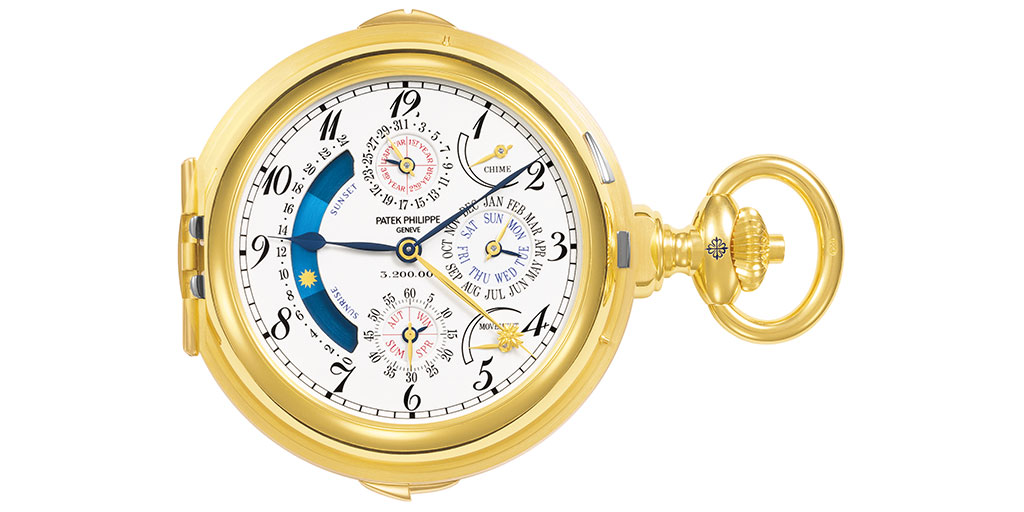
It would have taken one watchmaker 18 years to craft this timepiece, but the Star Caliber 2000 was result of dozens of people from different parts of the manufacture working together. The Star Caliber 2000 contains 21 functions which at the time of its unveiling ranked third in the list of the world’s most complicated watches after the Caliber 89 (1989: 33 complications) and the Graves Supercomplication (1933: 24 complications). But what sets the Star Caliber 2000 apart is its level of innovation and its achievement of six patents — for the chime, the running equation of time, the display of sunset and sunrise, the rotations of the sky and moon, the rapid calendar corrector and the selective sprung cover release mechanism.
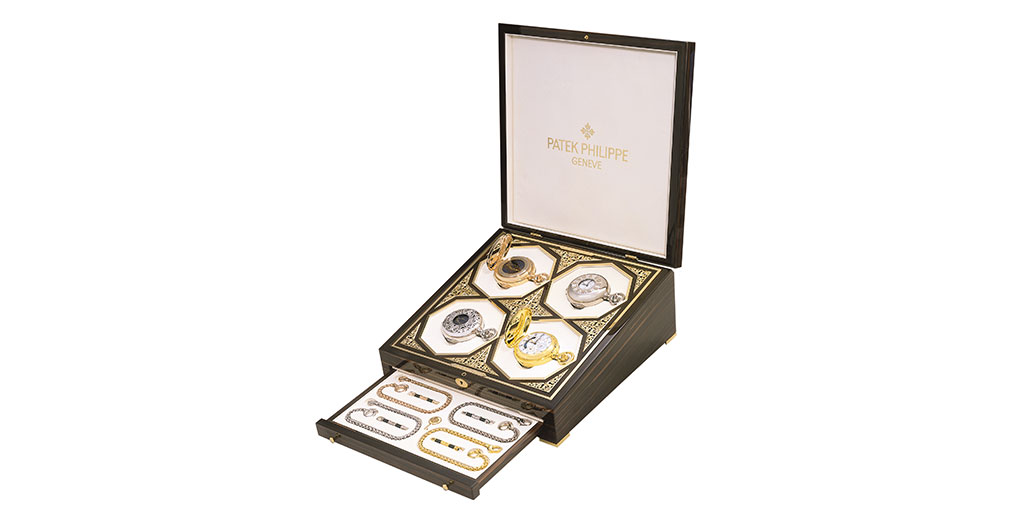
The Star Caliber 2000 was presented in five different sets of four watches, exquisitely displayed in a magnificent ebony box with applied gold engraving. Four sets consisted of pieces in 18K yellow, white and rose gold and platinum. Each of the watch cases in each set had the same engraving, but each set had its own unique design. The original cost of one of these sets was 13.2 million CHF (around 7.5 million USD at the time). The fifth set, made entirely in platinum presented each watch with a different engraved motif. Please see this Collectability interview with Christian Thibert Patek’s then master engraver who engraved each watch case and designed the presentation boxes. Mr. Thibert regards these pieces, especially the four platinum watches and the special architectural display he made for the owner in Qatar, as his personal masterpieces.
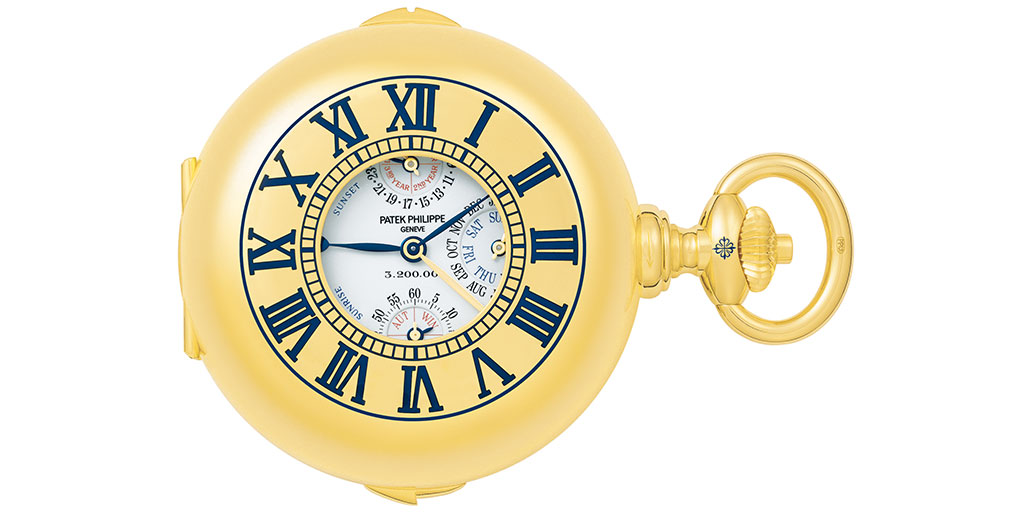
There are many ingenious new functions in the Star Caliber 2000 and each deserves attention. If you are interested in delving further, we recommend the Star Caliber 2000 book published by Patek which covers all the aspects of this fascinating timepiece. However, one area that deserves attention here is the Westminster chime.
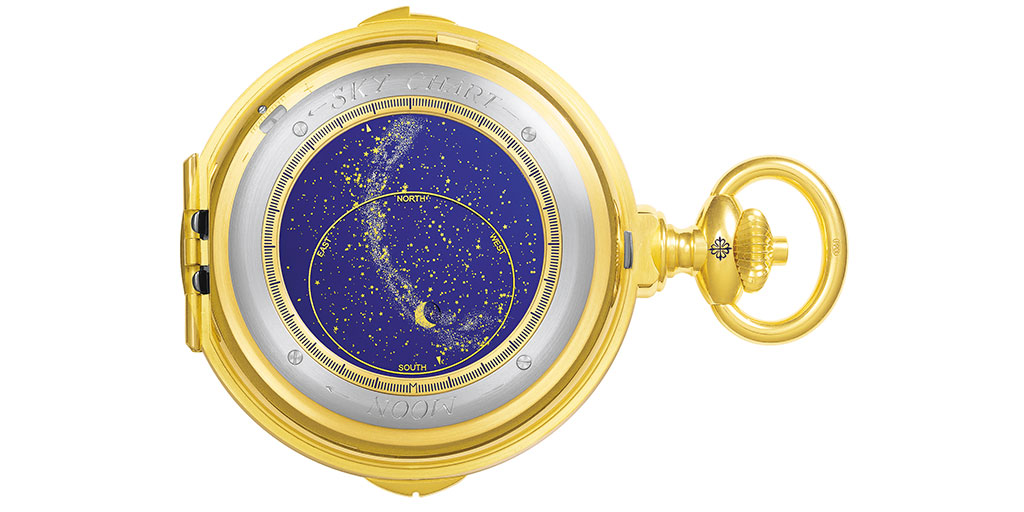
When I first visited Patek Philippe, Geneva in the late 1980s, I had the privilege to sit down with several key people in the company including Jean-Pierre Musy who was then head of research and development. I asked him what would be the ultimate development in watch making that he would like to see achieved? His answer was quick: a full Westminster Chime repeater in a pocket watch. Is this possible I asked? He was hesitant to answer a quick ‘yes’, but hoped it was something he would see in his lifetime. I wonder if he knew then that such an achievement was possible and would be revealed to the world in the Star Caliber 2000 – an appropriate way to ring in the third millennium.

The Westminster chime is synonymous with the chimes that ring out from the clock tower on London’s Houses of Parliament, and with Big Ben, the bell that sounds the hours (above). “Big” refers to the bell’s massive weight (13.5 tons), and “Ben” is short for Benjamin Hall, the commissioner who ordered the bell to be cast.

A timepiece that can strike a “Westminster chime” will strike the quarter hours, but not necessarily play the full tune of the clock tower’s distinctive chimes. In 1910, Patek Philippe had achieved a Westminster chime within the legendary Duke of Regla pocket watch with its ingenious five gong mechanism. Interestingly, it was through the renovation of this timepiece (which took over four years and a cost of over $50,000) that Patek mastered the next step in achieving the full Westminster chime. Fortunately, Mr. Musy had located the Duke of Regla, in a state of great disrepair in the 1980s, and entrusted its complicated and challenging renovation to legendary Patek watch maker, Max Berney. Today, this beautiful watch can be seen in the Patek Philippe Museum as fortunately, the dentist in Florida who owned it decided to sell it after the restoration in 1990.

To assist in the development of the new Westminster chime, another legendary Patek watch maker Paul Buclin, who assembled the Calibre 89, played an essential role in creating the Star Caliber 2000’s chiming mechanism. He had a personal interest in this complicated chime and was dedicated to replicating it perfectly. To replicate the Westminster chime, the innovative repeater consists of a five-gong chiming mechanism that sounds each new quarter hour in passing, by means of four hammers striking on four gongs of different pitch. A fifth hammer strikes the top of the hour on a fifth gong. In addition to the Westminster chime, a minute repeater strikes on demand the hours, minutes and quarters displayed by the hands. The Star Caliber 2000 chimes the quarters and hours in passing, as does the Westminster clock tower. It therefore sounds the quarter hours, minutes and hours in a totally new order since traditional minute repeaters strike the hour first, then the quarters and minutes.
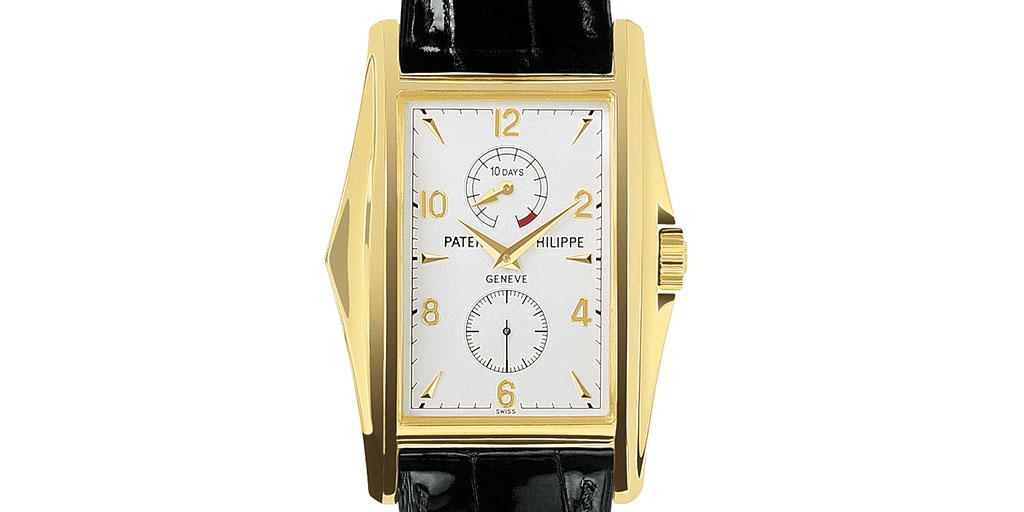
One of the greatest challenges in horology is the storage of power. Keeping a mechanical wristwatch running for 24 hours is in itself a challenge. It was fitting therefore that to celebrate the millennium, Patek Philippe created a wristwatch capable of storing ten days of power, an extraordinary achievement and yet another first for the archives of horology. The ref. 5100 was made in a limited edition of 3,000 pieces, 1,500 in 18K yellow gold with a silvery white dial; 750 in 18K rose gold, with a slate gray dial; 450 in 18K white gold with a midnight blue dial, and 300 in platinum with a black dial. For the first time, the platinum version had a decorative feature, requested by Philippe Stern: a flawless Top Wesselton diamond set between the lugs at 6 o’clock to distinguish the platinum from white gold. This subtle indication was then used to identify all other platinum pieces in the company’s collection. As with the limited edition pieces for the 1997 opening of the workshops, each watch was sold with a commemorative silver coin in honor of the millennium and a C.O.S.C. timing certificate.

The story behind the ref. 5100 can be traced back half a century before its introduction to the the ref. 2554. Produced from 1950 through the beginning of the 60s, the ref. 2554 was created in a variety of different styles. The most well-known shape of the series is the ‘Manta Ray’, with its distinctive angular, flared sides resembling the majestic marine animal. It was during this time that Gilbert Albert was head of design and there were various designs using different textures and metal combinations. The two piece cases were made by Markowski, who also made most of the shaped watches such as references 425, 1491, 2441 and 2442. Dials were made by Stern Frères
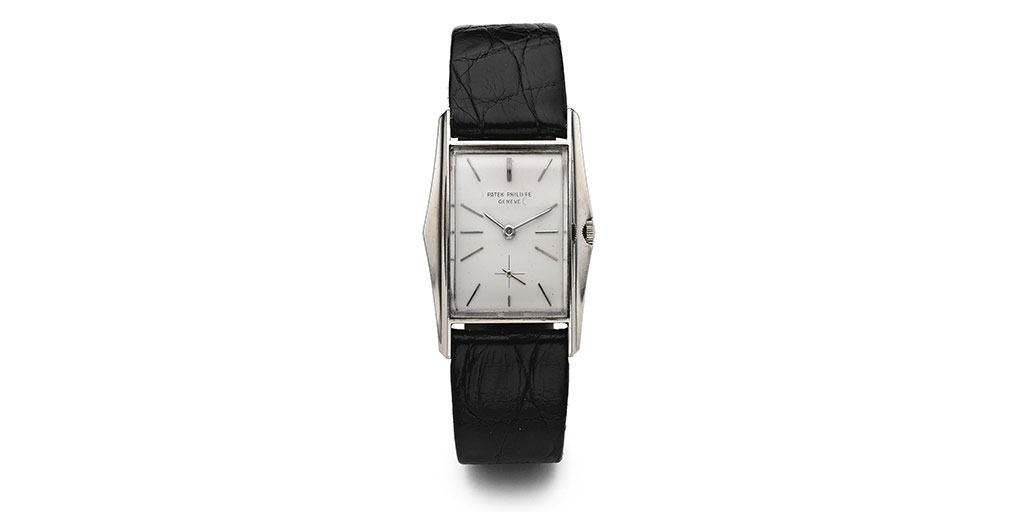
In fact, it was this unique design that attracted the then curator of the Patek Philippe Museum, Alan Banbery to propose its revival to house a revolutionary new movement to mark the year 2000. Philippe Stern agreed but he wanted a new “plain” movement to be developed in line with his company’s watchmaking philosophy that has no room for gimmicks. But “plain” is not a simple word at Patek Philippe and when the decision was made to create a movement with a 10 day power reserve, it took the company’s highly skilled research and development department three years to develop.

The result is the rectangular caliber 28-20/220 fitted with the famous Gyromax balance wheel, patented by Patek Philippe in 1949. This 28 x 20 mm movement (height 5.05 mm) comprises 175 parts which produce 240 hours of power reserve. Such an extraordinary power reserve starts simply with turning the crown which enables the rachet to arm the barrel arbor which in turn winds the spring. As this happens, the teeth of one barrel wind the spring of a second barrel. These self-compensating double barrels are critical to produce the power reserve. Although not identical, both barrels are wound at the same time. A slipping spring is fitted to the arbor of the winding barrel to prevent over-tension of the springs and potential blocking of the winding mechanism when the maximum power reserve has been reached. Barrel power is transmitted to the wheel train through the gear train rachet. The Gyromax balance wheel guarantees the stable functioning of the movement, assuring timekeeping accuracy.

The power reserve is indicated in a sub-dial at 12 o’clock. Around 100 turns of the crown will fully-wind the movement, as indicated by the sub-dial hand. When the reserve of power is almost empty, the hand of the sub-dial reaches the red warning zone. By this time, 864,000 seconds have ticked away on the seconds hand located below at 6 o’clock.

The dramatic 33.9 mm x 46 mm case design required 188 separate operations to craft the extended and flared bezel edges, and the refined concave-convex case. The crown is decorated with the Calatrava Cross and the edge of the case back is engraved ‘Year 2000 Patek Philippe’. A sapphire crystal case back reveals the magnificent movement.

So far, around 105 of the 18K yellow gold version have come back to the market, 70 of the pink gold version, 60 of the white gold version and 50 of the platinum version. All the case dies and tools were destroyed when production was completed, so even though the original limited edition total production numbers of 3000 seem relatively high, these pieces are sought after by collectors as each remains a unique, never-to-be-made-again piece.
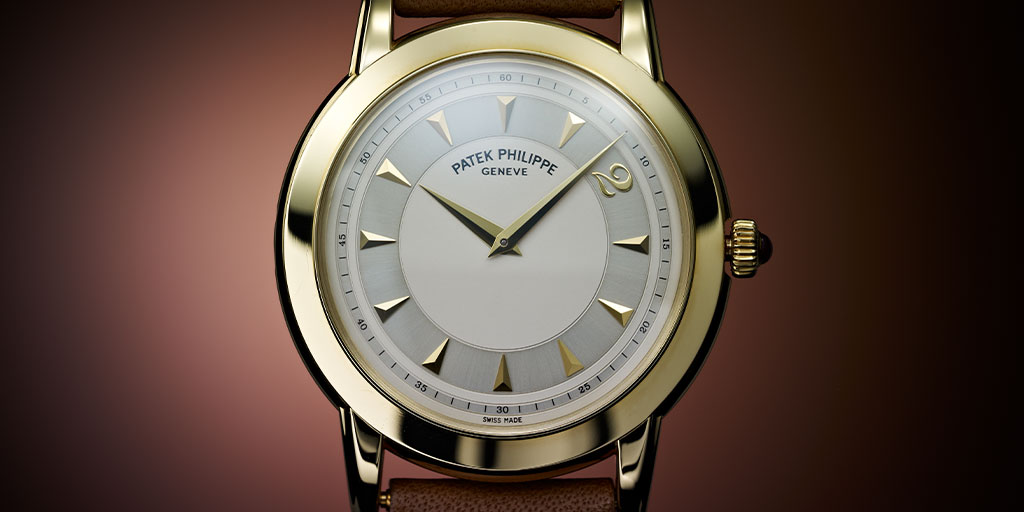
One last addition to the Year 2000 limited editions is ref. 5032 Millennium which was sold exclusively through the Patek Philippe Salon in Geneva. Only 100 pieces of the 18K yellow gold watches were produced. The two piece 42 mm case by Favure-Perret features a screw back and downturned lugs. The ultra-thin, self-winding Calatrava ref. 5032 was produced from 1995-2001 in three series, the last being the limited edition Millennium version. What distinguishes the Millennium version from the earlier two series is the distinctive silvered dial with applied gold numeral ‘2’ and triangular indexes. So far, only 13 known pieces have appeared on the market from the original 100 pieces sold.
For our next In-Depth look at Patek Philippe limited editions, we will explore the commemorative watches made to recognize the company’s important retailer partners such as Beyer, Tiffany & Co. and Wempe.

